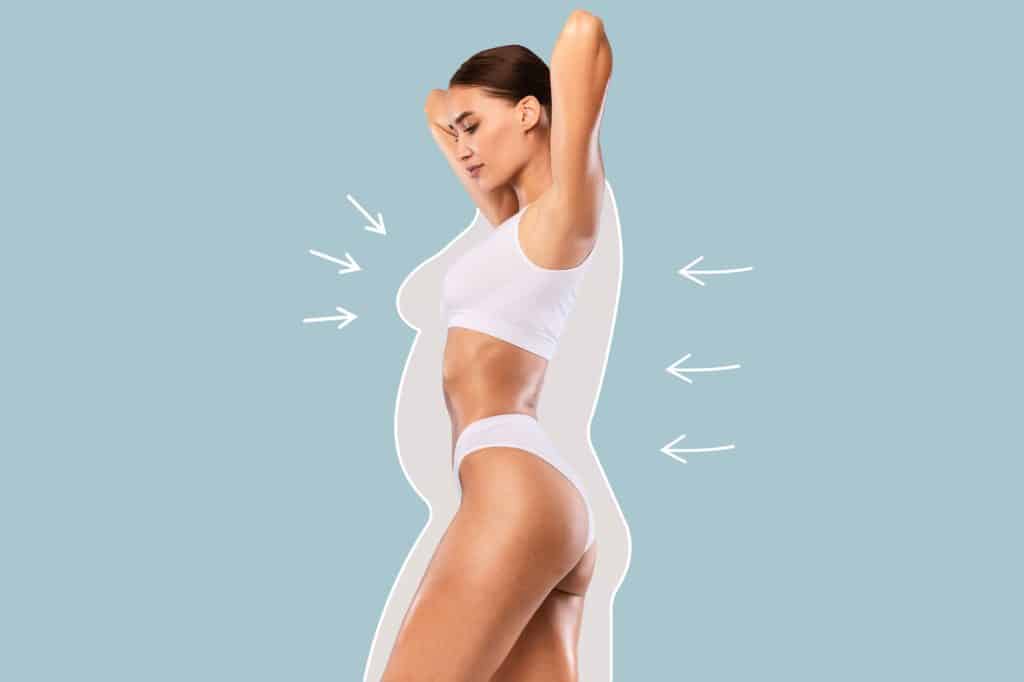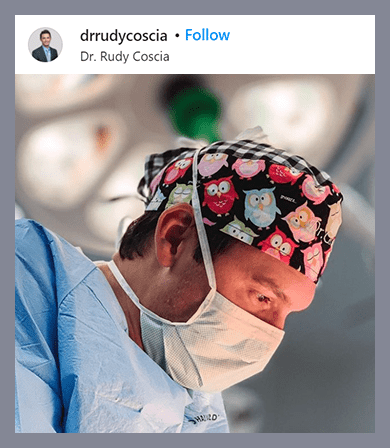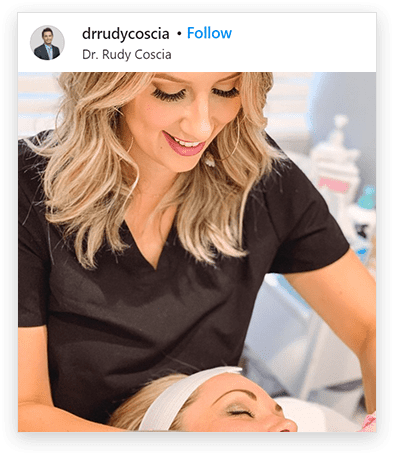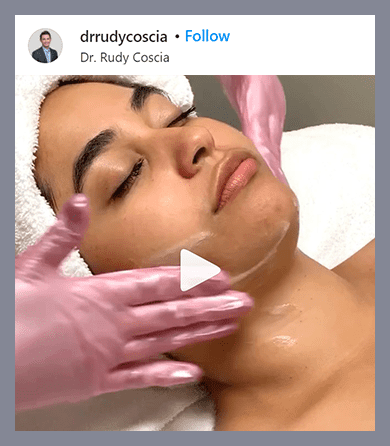
Body Lift after Weight Loss in Sacramento, Granite Bay & Coeur d'Alene
After significant weight loss, patients obviously enjoy a great deal of satisfaction and accomplishment. However, depending upon the amount of weight lost, they can often be left with varying degrees of excess skin that can be quite bothersome.
The body lift procedure is designed at targeting those areas of excess skin and removing them, thereby providing the desired contour improvement.
Home » Body Lift after Weight Loss in Sacramento
What is a Body Lift?
The body lift procedure is a general term used to describe removing excess skin, typically after large amounts of weight loss. The specifics of the procedure are tailored for each patient depending on the areas of concern and could have various meanings. As weight is lost, the skin normally has the ability to react to small amounts of weight loss and contract to appropriately contour this new shape. However, when a large degree of weight is lost, the skin often loses its natural elasticity and remains loose. Therefore, surgical intervention is typically the only treatment course.
What is a Lower Body Lift?

A lower body lift entails removing excess skin and excess fat distribution from the lower trunk. This would involve a traditional abdominoplasty with removal of excess skin and fat and tightening of the abdominal muscles to improve contour. In addition, this would involve removing excess skin and fat from the lower back. Therefore, the patient would have an incision placed below the underwear line circumferentially around the lower waist in order to improve shape and contour 360 degrees around the patient. This can be referred to as a lower body lift, a belt lipectomy, or a circumferential abdominoplasty.
What is an Upper Body Lift?
In a similar fashion, an upper body lift can be performed. Oftentimes after significant weight loss, patients are left with excess skin along the chest and underneath the armpit area, and it can continue around the upper back. Many women are bothered by excess skin hanging over the bra line. Similar to the lower body lift, the upper body lift involves removal of skin and fat around the upper back and side. Careful attention is placed on positioning the scar to fall just under the bra or bikini line.
What Procedures Can be Combined with Body Lift Procedures?
Oftentimes patients that have lost a significant amount of weight will undergo various procedures targeted at the areas of excess skin that bother them most. This could be an upper body lift or a lower body lift, and sometimes is combined with a mastopexy or a mastopexy/augmentation. In addition, a breast auto-augmentation allows for a breast augmentation utilizing the patient’s own tissue. In this procedure, an upper body lift is performed to remove excess skin and fat, but a portion of this tissue is utilized and rotated into the breast to augment the breasts rather than use implants. Similar to the auto augmentation, buttocks augmentation can also be performed. In this procedure, a lower body lift is performed in typical fashion with the addition of utilizing a portion of the lower back tissue to transpose into the buttocks to give added fullness to an area that is typically flattened and without fullness after weight loss. Furthermore, some patients elect to undergo an arm lift, also known as a brachioplasty, or a thigh lift to remove excess skin in these areas.
The combination of these various procedures, as well as the logistics of how they are carried out will be discussed with each patient individually. With large procedures like this, safety for the patient is of utmost concern. Therefore, depending on the procedures being discussed, certain ones may be combined together and others may be staged as secondary procedures in order to limit the length of surgical time.
What Type of Anesthesia is Used for this Procedure?
Essentially for all of these procedures general anesthesia is used. This allows for complete patient comfort and an optimal setting for the best outcome.
Body Lift Recovery
The surgery itself does take a few hours with upper and lower body lifts. You would then spend some time in our recovery room to assure that you are ready to be discharged home. Once discharged home, you will have drains in place. The anesthesic, Exparel, will allow for approximately three days of near numbness along the abdomen to assist with pain control and help during the initial healing phase. You will speak extensively with Dr. Coscia on your postoperative instructions as well as your restrictions. You can typically plan on refraining from core exercises for approximately six weeks to allow for appropriate healing. Most patients take approximately two to three weeks off of work for this type of procedure.
FAQs
Which concerns can be treated with body lift surgery?
 Losing a significant percentage of your body fat can drastically improve your health. Unfortunately, massive weight loss often leaves remnants of your larger size in the form of dimpled skin, uneven soft tissues, stretch marks, abdominal bulges, back rolls, hanging skin in the thighs and arms, sagging buttocks, and volume loss in the breasts and buttocks. Upper or lower body lift surgery can address most of these concerns. Stretch marks within the loose skin will be trimmed away with the excess tissues, but some stretch marks may remain after the body lift.
Losing a significant percentage of your body fat can drastically improve your health. Unfortunately, massive weight loss often leaves remnants of your larger size in the form of dimpled skin, uneven soft tissues, stretch marks, abdominal bulges, back rolls, hanging skin in the thighs and arms, sagging buttocks, and volume loss in the breasts and buttocks. Upper or lower body lift surgery can address most of these concerns. Stretch marks within the loose skin will be trimmed away with the excess tissues, but some stretch marks may remain after the body lift.
Do I qualify for body lift?
People in good health who have lost excess weight with diet and exercise or weight loss surgery (bariatric surgery) may qualify for body lift if they have loose, hanging skin. It’s important to have realistic expectations for the procedure, recovery, and results. Patients should maintain their lower weight for at least one year or longer before having body lift to ensure the lifestyle changes are permanent.
Whether you’ve gained and lost a lot of weight or have had one or more pregnancies, it’s common to have sagging skin or an “apron belly” that impacts your quality of life and self-esteem. If excess skin prevents you from enjoying social events or intimate activities or causes skin chafing or infection, body lift may be the next step in your transformation.
How can I prepare for body lift surgery?
Continue to eat well and lead a healthy lifestyle while waiting for your body lift surgery. Organize at least two weeks off with your employer and line up someone to drive you home on the day of your surgery who can stay with you for several days. If you smoke, you must quit several weeks before surgery and abstain for at least six to eight weeks after to ensure a safe procedure and proper healing. Do not consume alcohol for several weeks before body lift.
You can prepare your home by creating a recovery space with necessary items like water bottles, straws, chargers, blankets, and pillows. Pack your hospital bag, including loose-fitting, comfortable clothing that’s easy to take on and off, a water bottle, healthy snacks, slippers, skin moisturizer, toiletries, and chargers for your devices.
Dr. Coscia will discuss your medications and supplements, some of which may need to be discontinued before your procedure to avoid complications, such as blood thinners.
How long does body lift surgery take to complete?
The length of your body lift depends on the severity of loose skin and whether you’re having an upper or lower body lift. Body lift may take four to eight hours in the operating room.
Why do I need compression garments after plastic surgery?
Compression garments help to control or mitigate post-operative swelling and bruising. These items manage healing and are crucial to body lift recovery and results. Patients must wear compression garments for at least six weeks after body lift surgery.
 How can I reduce scarring after body lift?
How can I reduce scarring after body lift?
The incision lines from body lift will fade over time but will be visible. You can reduce the appearance of body lift scars by choosing a board-certified plastic surgeon, such as Dr. Coscia, with an excellent track record and following all post-op instructions. During initial recovery and up to a year after body lift, avoid using products or wearing clothing that may rub or irritate the incision lines. Wear sunscreen, prevent direct sun exposure on incision lines for at least a year, and moisturize often. Dr. Coscia may recommend topical treatments to lessen visible scarring.
What happens if I gain weight or become pregnant after body lift?
It’s best to avoid gaining and losing more weight because it may stretch the tissues and require further excision. Eating a well-balanced diet and leading an active lifestyle can prevent excessive weight gain after body lift surgery. You may still become pregnant after body lift. Most plastic surgeons recommend waiting for skin removal procedures until you’ve finished growing your family because future pregnancies can impact your results.
Does health insurance cover body lift?
Some providers may cover a portion of the body lift procedure after massive weight loss. Contact your insurance company to see if you qualify for coverage. Dr. Coscia offers patient financing through CareCredit and M-Lend Financial Services.
Scars, Lumps & Puffiness
Set Up a Body Lift Consultation
If you are interested in discussing any body lift procedure, contact The Plastic Surgery Center and ask to set up a consultation. Together, you and Dr. Coscia, will thoroughly discuss your concerns and formulate a plan to target these areas.
Dr. Coscia’s practice also serves Coeur d’Alene, ID, and the Rocklin and Loomis areas. Please fill out the form on this page to request a consultation or call our call his Granite Bay (916) 249-2863 or Sacramento (916) 318-5826 locations to request a consultation today.
*Individual results may vary













